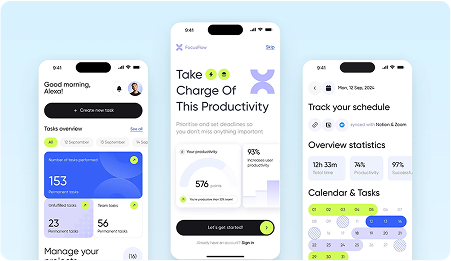
The Ultimate Guide to Game Development: Stages, Workflow, and Pipeline
Game development is like a big adventure. Are you building a tiny game for your phone? Or is it a massive RPG? Exciting! Either way, you need to understand the stages of game development clearly. Because it’s crucial. It’s like having a map to guide you from the start to the finish.
Thank you for reading this post, don't forget to subscribe!
Why is this important? Well, game development isn’t just about coding or drawing cool characters. In fact, it’s about having a solid plan, following a clear process, and hitting important milestones. Ever built a house? Well, it’s kind of the same. You need a blueprint to ensure everything fits together. So, knowing all this always saves you a lot of trouble and helps you create a positive game development workflow. And that’s both fun and works well. So, let’s take a look at the steps to making a video game. Shall we?
1. Pre-Production
Table Of Content
Pre-production is like planning a vacaion. So, you wouldn’t just hop in a car without a map, would you? Absolutely no! It’s about getting ready for your game. So, before you even start coding or making things, you need a clear idea of your game design workflow. How? Well, imagine your game as a place you want to go. Now, think! Where do you want to go? What kind of fun will you have?
The Game Design Document (GDD)
This is where the Game Design Document comes into play. So, what you need to do now is to think of the GDD as your game’s sketch. Basically, this outlines game development milestones like
- gameplay mechanics to the storyline
- character design
- technical requirements
Moreover, this document ensures everyone on the team is on the same page. Why this is important? Because this prevents major confusion down the road.
Important? Because this prevents major confusion down the road.
Choosing the Right Game Engine
Secondly, yes, the GDD is crucial. However, you also need to choose the right game engine. Now, this solely depends on your game’s complexity. For starters, you can go with either something like Unity. You can also opt for Unreal Engine. However, if you need a simpler choice for indie projects. Then, research!
Take your time. Don’t rush. Because the choice of engine can influence your entire game design workflow. So, it’s not a decision to take lightly.
Defining Game Development Milestones
So, your GDD is set? Great. And did you choose your engine? Cool to hear! Now, it’s time to define your game development milestones. What are they? Basically, milestones are mini-goals that keep the project on track. This can include tasks like
- finalizing the game’s core mechanics
- developing a prototype
- nailing down the art style, etc
So, essentially, you are laying out the stepping stones for the rest of the game development process.
The Benefits of Pre-production
Well, by now, you must be wondering about the benefits. Well, there are many, you know. If you think about it, the actual biggest pro of having pre-production is that it saves you from money-robbing mistakes later. How so? Well, take a minute and imagine. How bad would it be if you realized halfway through production that your game mechanics don’t work? That’s a nightmare. That, too, a practical one. That’s what pre-production helps avoid. Basically, it’s the stage where potential problems are identified and fixed before they become disasters.
The Importance of Preparation
To conclude it, pre-production is all about preparation. However, if you skip this phase or rush through it. Then, it’s like building a house without a solid foundation. And trust us, no one wants a wobbly game.
2. Production
Okay, let’s get this show going! Now that you’ve got your game plan laid out. All thanks to pre-production. So, it’s time to dive right into the production stage. Hold your breath. Why? Because this is where the true magic unfolds.
Till now, anything that you have planned starts to take shape. It can be anything from coding and creating assets to fine-tuning gameplay mechanics.
Laying The Foundation:
Okay, so first, we got coding. Here, the programming team gigs into developing the game’s
- Core Mechanics
- Interactions
- Systems
Now the question is for you. So, are you building AI behaviors? Or are you implementing physics? Either way, coding is essentially the backbone of your game. Why? Because it’s here where the game’s functionality is shaped, using the engine chosen in pre-production.
Crafting The Visuals:
Secondly, as you dive into coding, your art and sound teams are hard at work. Basically, the art team creates everything the player will see, like
- characters
- Environments
- In-game Merch
Now, this concept art mostly evolves into 3D models or 2D sprites. Then, it gets animated, adding life and motion to the game. In contrast, the sound team actively crafts the game’s audio assets. This includes things like
- sound effects
- background music
- voice acting
And all of what enhances the player’s immersive experience.
Fueling Engine:
Also, let’s not forget about game mechanics. This is important! Basically, this is where balance is crucial. So, are you tweaking how fast a character moves? Or how much damage does an enemy deal? All of these details can make or break a game’s playability. It’s here where the team will constantly iterate. Moreover, they test out different ideas and refine the game to make sure it’s fun and engaging.
Organizing Everything:
Lastly, now, all of these things come together in the game development pipeline. This is where the workflow gets organized. So, everything, from asset creation to integration, follows a structured pipeline. Why so? Because this ensures that the game progresses smoothly without problems. So, are you dealing with art? Sound? Or is it coding? Either way, the production stage is a well-oiled machine. And all of it is driven by the game production pipeline.

Now, yes, production is exciting. But beware, because it’s also the longest stage. You’ll face challenges like
- feature creep
- the temptation to keep adding more
- unexpected bugs etc
However, the key is sticking to your plan and following the video game pipeline you’ve set up. So, just keep iterating, keep refining, and watch as your game grows!
3. Testing & QA
So, is your game shaping up nicely? Greato! However, hold on! Basically, before you start dreaming of launch day, there’s one crucial step. And trust us. You seriously don’t wanna skip it. (You can’t). That is, Testing and Quality Assurance QA. So, no matter how cool your game looks or how solid the gameplay feels. Listen up, if it’s riddled with bugs, players will bounce faster than you even imagine.
Initial testing:
Firstly, this stage of the game development workflow is more like a hunt. Basically, you hunt down all those bugs and ensure your game runs smoothly across different devices and setups. In functional testing, the QA team focuses on ensuring every feature works.
Like, does that jump button actually make the character jump? Can players advance to the next level without any hiccups? Basically, it’s all about ensuring that the game mechanics behave as expected.
Round Two:
Then, we have compatibility testing. So this ensures that the game plays nicely with various
- Hardware setups
- Screen sizes
- Operating systems
Now, with so many different devices out there, especially if you’re developing for both PC and mobile. The, this step is crucial for giving players a pretty and fulfilling experience.
Essential Step:
Lastly, Of course, you can’t forget about the bug testing. Here’s where things get serious: QA testers actively try to break the game (in a good way!). Basically, by doing things players might not even think of, like
- jumping through walls
- Ruining the prizes
- mashing buttons to see if the game crashes
Does this sound like madness or destruction? The plan is that if you catch these issues now, you will prevent a flood of complaints.
In short, the game testing phase is like giving your game a final polish.
Bonus Tip! A smooth, bug-free experience is what keeps players engaged. And trust us! Nobody wants their first impression of your game to be a crash screen!
4. Pre-Launch Operations
Game production pipeline” and “game launch process.”
Lastly, have you gotten rid of all those bad bugs? Great news! Now, your game looks like a new polished shiny bag. So, guess what? It’s almost showtime! However, before you hit that launch button, there’s a final checklist in the game production pipeline: pre-launch operations.
So, this stage is where you ensure everything is in place. Now, this promises a successful release. So, you can think of it as putting the finishing touches on a grand performance.
Getting The Word out:
First up is marketing. You could have the most incredible game ever made. However, if no one knows about it, well… that’s a problem. So, pre-launch marketing involves
- generating buzz through trailers
- sneak peeks
- building excitement on social media
But don’t lose yourself in the small yet intricate details of platform-specific strategies. You just need to ensure your target audience is hyped and ready to play.
Finalizing Touchups:
Secondly, we dive into the final optimizations. So, this is where you fine-tune the game to ensure it runs smoothly. Plus, you get to fix any last-minute performance issues. So, is it optimizing the game for faster loading times? Or do you need to ensure graphics look great across all devices? Basically, these tweaks can make a huge difference in the player’s experience.
The Last Resort?
Finally, you’ve got to think about the actual game launch process. This includes
- distribution platforms
- pricing models
- launch timing
Are you launching on Steam? The App Store? Or is it gonna be all of the above? You gotta line up all the details. Because this ensures your game has a smooth and successful release.
So, with your marketing in motion, your game fully optimized, and all your launch details in place, you’re ready for the big day!
5. Post-Launch & Maintenance
Congrats! Your game is out in the world. And let’s say payers from around the world are pooling in! However, that’s not the end of the JB. Your work just started. Unbelievable? Well, believe it! You know, post-launch is just as critical as pre-launch. What is it about? Basically, it’s all about maintaining the momentum you’ve built.

This stage of creating a video game focuses on keeping your players engaged and your game running smoothly.
Cleaning Up the Mess:
First up are bug fixes. We aren’t saying your test before was rigged or faulty. Basically, the thing is that no matter how thorough your testing was, once your game reaches the hands of players, unexpected issues happen.
Maybe certain hardware setups cause crashes. Or players discover a game-breaking exploit. So, this is where your team jumps in with quick fixes to patch up any problems that arise.
After Care:
Now, after that, you will receive post-launch support. This can include
- regular updates that improve gameplay
- add new features
- introduce downloadable content (DLC)
Well, here’s a tip! You know, DLCs are a great way to keep your community excited and engaged. How so? Well, you can offer
- new levels
- Characters
- challenges
Essentially, this extends the life of your game.
Positive Listening:
Lastly, don’t forget about player feedback. You gotta listen to what your audience has to say. Basically, it can be anything and anywhere, like
- Reviews
- Forums
- Social media
Basically, all this can give you valuable insights for future updates. Or even better. Ideas for your next game. Moreover, players love feeling heard. And if you make tweaks based on their suggestions, that’s gonna foster loyalty.
If we put it all in a nutshell, post-launch is about keeping your game fresh. Moreover, it ensures that players stick around long after the initial release.
Conclusion
And there you have it! Well, we discussed the stages of game development. Impressive! Now, if you understand all these stages of game development and follow a well-structured game development workflow. Then, it’s key to creating a successful game.
Basically, each stage plays a vital role. Also, remember, a solid game development workflow isn’t just about making a game. In fact, it’s about making a game that players love So, the key here is to stick with these steps. Because if you do so, you’re not just building a game. But you’re building an experience.
So, already a master? Or just starting out? Either way, keeping this structured approach in mind will set you on the right path.
GOOD LUCK!
- Game Development
- Game Development Company
- Game Development Services
Table Of Content






